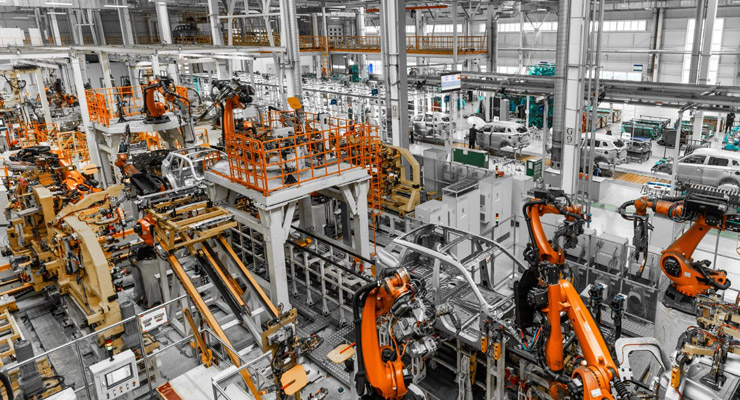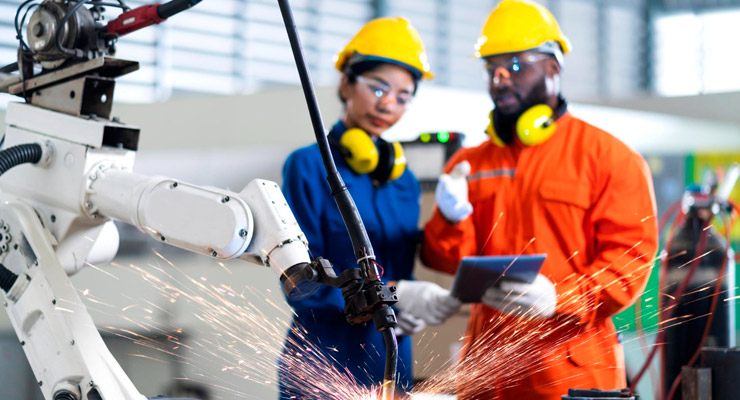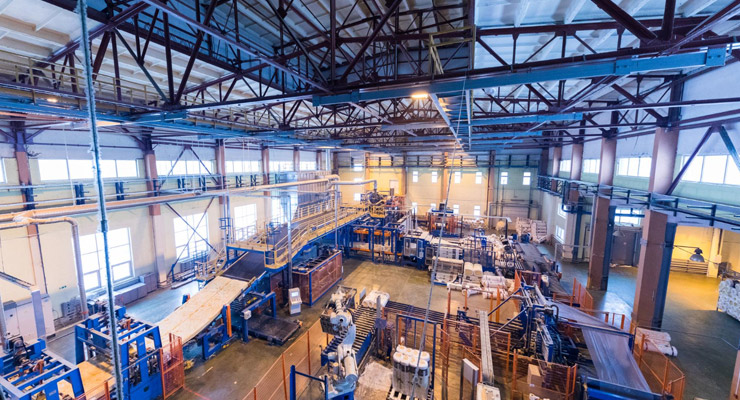Manufacturing in India : An Introduction
Manufacturing in India : India is an emerging superpower in the global manufacturing arena. The manufacturing sector is considered the backbone of economic growth in India. With increasing foreign investment and government initiatives, the sector is booming. The “Make in India” initiative has promoted India as a global manufacturing hub. The sector has grown significantly in recent years, contributing 16% to the GDP. The automotive, pharmaceuticals, textiles, and food processing industries are the major contributors to the sector.
The importance of the manufacturing in India can be seen in job creation and providing employment opportunities to millions of people. The sector is the second-largest employer after agriculture in India. It has been instrumental in reducing the unemployment rate in India, which is why the government gives priority to the manufacturing sector in its policies. Manufacturing is set to grow at an unprecedented rate in India with the ‘ease of doing business’ policy, simplified taxation and digitization of operations.
It is estimated that India’s manufacturing sector could contribute $1 trillion to the economy by 2025. The government’s ‘Atmanirbhar Bharat’ or ‘self-sufficient India’ program aims to boost local manufacturing capabilities and reduce imports. It is essential to understand that the manufacturing sector in India has a long way to go, with infrastructure and labor still being major challenges. However, with the right policies and investments, the sector is expected to grow exponentially. In short, the future of manufacturing in India seems to hold immense potential for growth.
Current Scenario of Manufacturing in India

Manufacturing in India has been on a growth trajectory, contributing significantly to the country’s economic development. However, the sector has not been immune to various challenges which have affected its growth potential. Factors affecting the manufacturing sector in India include inadequate infrastructure, archaic labor laws, and a lack of skilled labor. The inefficient supply chain management has also hampered the growth of the sector.
Government policies have been restrictive and complex, making it harder for businesses to establish themselves. Besides these challenges, the COVID-19 pandemic has severely impacted the manufacturing sector in India. The lockdown led to a halt in operations, negatively impacting the production and supply chain. The demand for goods decreased, and the scarcity of raw materials made the situation even worse. The Indian government realized the need to boost the manufacturing sector, given its importance to the economy.
The Make in India initiative was launched to attract investment and foster innovation in the sector. The government also introduced schemes and policies, enabling businesses to establish themselves. One such policy is the National Manufacturing Policy, which aims to increase the sector’s contribution to GDP to 25% by 2025. Initiatives like the SEZs (Special Economic Zones) and the National Investment and Manufacturing Zones (NIMZ) were launched to attract foreign investment.
The PLI (Production-Linked Incentive) Scheme was also introduced to encourage local manufacturing and investment in sectors like electronics, pharmaceuticals, and automobiles. Overall, the Indian government has been working towards a favorable business environment, enabling manufacturing opportunities. However, there is still much work to be done to address the challenges faced by the sector. The government needs to focus on developing an efficient infrastructure, improving supply chain management, and bridging the skill gap.
The future of the manufacturing sector in India looks promising, with the country expected to emerge as a global manufacturing hub by 2025. With the right policies and initiatives in place, the sector has the potential to contribute significantly to the country’s economy.
Future of Manufacturing in India

When we talk about the future of manufacturing in India, it is incomplete without discussing the technological advancements in the sector. With time, the manufacturing sector in India has shifted its focus to digitalization. Incorporating Industry 4.0 in the sector has enhanced productivity, efficiency, and quality. Industry 4.0 is transforming India’s manufacturing sector by revolutionizing its traditional manufacturing approach.
The Fourth Industrial Revolution has set the stage for a new era of manufacturing in India. Industry 4.0 has introduced new technologies like Artificial Intelligence (AI), Robotics, Big Data, and the Internet of Things (IoT), which have transformed the manufacturing sector’s dynamism. Furthermore, the Indian government has taken numerous initiatives to encourage the adoption of Industry 4.0 in the manufacturing sector.
Setting up advanced manufacturing hubs across India and announcing incentives to encourage the integration of new-age technologies in the manufacturing sector has been a breakthrough move. India is now well-positioned to become a manufacturing hub for quality products at affordable prices. Talking about the potential of growth in India’s manufacturing sector, according to recent research, India could become the world’s fifth-largest manufacturing country by 2025.
Rapid urbanization, favorable demographics, and robust government support are driving India’s attractiveness as a manufacturing destination. With the expansion of SMEs and MSMEs, India’s manufacturing sector is set for robust growth in the next few years. In conclusion, the future of India’s manufacturing sector is bright and replete with promise. With a combination of advanced manufacturing technologies, robust government support, and the presence of a skilled workforce, India’s manufacturing sector is set for rapid and long-term growth. If India maintains its current momentum, the country is poised to become a global manufacturing hub.
Challenges to be Addressed for Growth of Manufacturing Sector in India
The manufacturing sector in India has seen significant growth in recent years. However, there are still some challenges that need to be addressed for the industry to flourish. One of the biggest challenges is inadequate infrastructure. The lack of proper roads, ports, and other necessary infrastructure often results in delayed shipments and increased costs. Another challenge that the industry faces is inefficient supply chain management.
This can lead to delays in production and shipping, resulting in increased costs and decreased efficiency. In order to address this issue, companies need to focus on improving their supply chain processes and investing in technology that can help streamline these processes. Finally, a skilled labor shortage has also been a major issue for the manufacturing sector in India. With a large population, many people assume that there will be no shortage of workers.
However, the reality is that many workers do not possess the necessary skills that are needed to work in the manufacturing sector. Companies need to focus on providing training and development opportunities to their employees in order to fill this skills gap. Despite these challenges, there is still a lot of potential for growth in the industry. With the government’s continued focus on initiatives like “Make in India”, the sector is expected to continue its upward trajectory.
Companies that can navigate these challenges and invest in the necessary infrastructure and technology will be well-positioned to thrive in the years to come. At the end of the day, there is a lot that needs to be done to ensure that the manufacturing sector in India can achieve its full potential. But with the right investments and a commitment to growth, the future looks bright for this important industry.
Manufacturing Sector by 2025
As India sets its eyes on becoming a $5 trillion economy by 2025, the manufacturing sector is expected to play a major role in achieving this feat. With the potential of becoming a global manufacturing hub, India is poised to attract investments and boost its manufacturing capabilities. As per reports, India has the potential to become one of the top manufacturing destinations in the world, driven by factors such as low-cost labour, favorable government policies and a large domestic market.
The government’s ‘Make in India’ initiative has also helped in attracting foreign investments and promoting local manufacturing. Talking about investments, the Indian government has set a target of attracting $100 billion worth of investments in the manufacturing sector by 2025. This investment is expected to create job opportunities and drive the growth of the sector. The focus areas include industries such as automotive, electronics, food processing and textiles.
Another significant aspect of India’s manufacturing sector is the role played by Small and Medium Enterprises (SMEs). These enterprises have been driving innovation and growth in the sector, contributing to over 30% of the manufacturing output. With supportive government policies such as the ‘Udyog Aadhaar’ programme and initiatives such as the National Small Industries Corporation (NSIC), SMEs are expected to contribute significantly to the sector’s growth by 2025.
In conclusion, India’s manufacturing sector has come a long way and is poised to make significant contributions to the country’s economy in the coming years. The potential of becoming a global manufacturing hub, expected investments and the role of SMEs in driving growth are some of the key factors that will shape the future of this sector. It is an exciting time for India’s manufacturing industry, and the future looks bright.
Conclusion
After analyzing the manufacturing sector in India, we can conclude that it has immense potential for growth and development. With the government’s support and initiatives, the sector has been advancing with significant technological improvements. However, there are still some challenges that need to be addressed, such as inadequate infrastructure, inefficient supply chain management, and a shortage of skilled labor.
Looking towards the future of the manufacturing sector in India, we can see that it has a tremendous scope for growth. It has the potential to become a global manufacturing hub, attracting investments from all over the world. The SMEs in India also have a significant role to play in the growth of this sector. In conclusion, we can say that the manufacturing sector in India has come a long way in terms of growth and development.
With the right initiatives and support, India can become one of the leading manufacturing hubs in the world. The future is bright, and we can look forward to seeing significant advancements in this sector in the coming years.
Disclaimer: The views expressed in this blog are for educational purposes only. This is not professional advice. Consult your financial advisor before investing.




